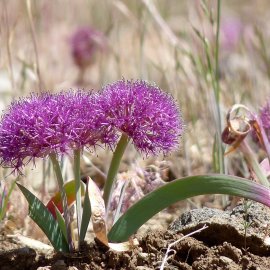Onions are monocots that are perennial grasses with onion-scented bulbs and star-shaped flowers arranged in bracted umbels. The bulbs send between 1-4 onion-scented leaves that are flat and linear, sickle-shaped, or hollow and tubular. There are approximately 300 species in the Agavaceae largely within the northern hemisphere. In California there are three genuses in the family: Allium, which has 47 species and several varieties, and Ipheion (one non-native African species common in gardens) and Nothoscordum (one species, which does not smell like onions).
Interesting Facts
- The family is almost entirely edible and includes some of the most desirable food plants such as onion, chives, garlic, leeks, and shallots.
- Plants in this family smell like onion when crushed due to volatile oils
- Sulfur glycosides found in these plants, including garlic, is a commonly used supplement that is known to lower cholesterol and blood pressure.
Allium ssp. in California
Due to the large number of species in the genus and widespread and variable nature of most, it is difficult to identify these plants to species by sight. Features that are used for keying to species include form and number of leaves, details of the ovaries, and the pattern on the bulb. A few of the species are shown below.
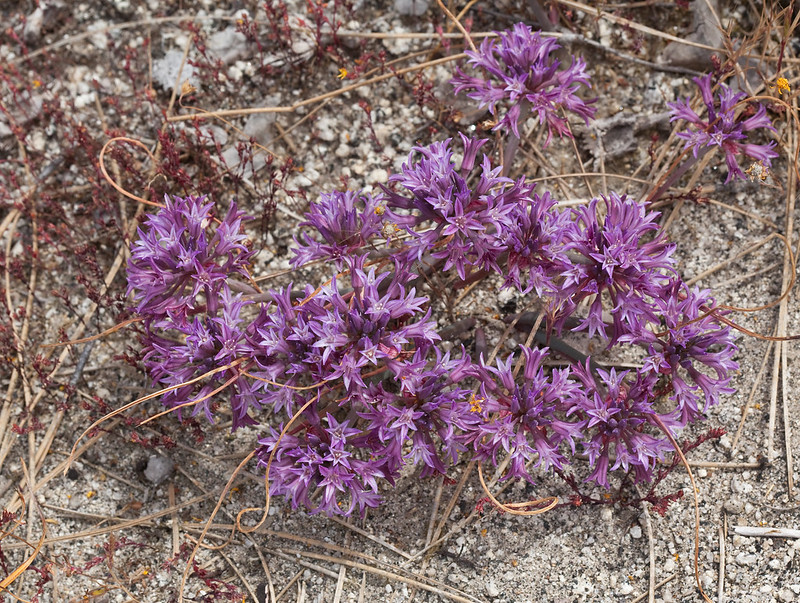
_________________________________
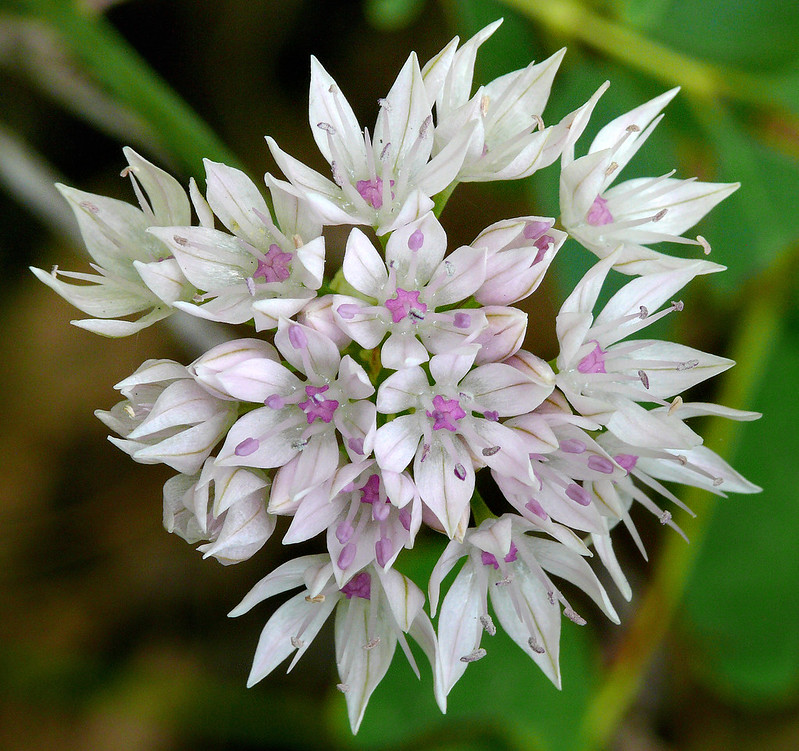
_________________________________
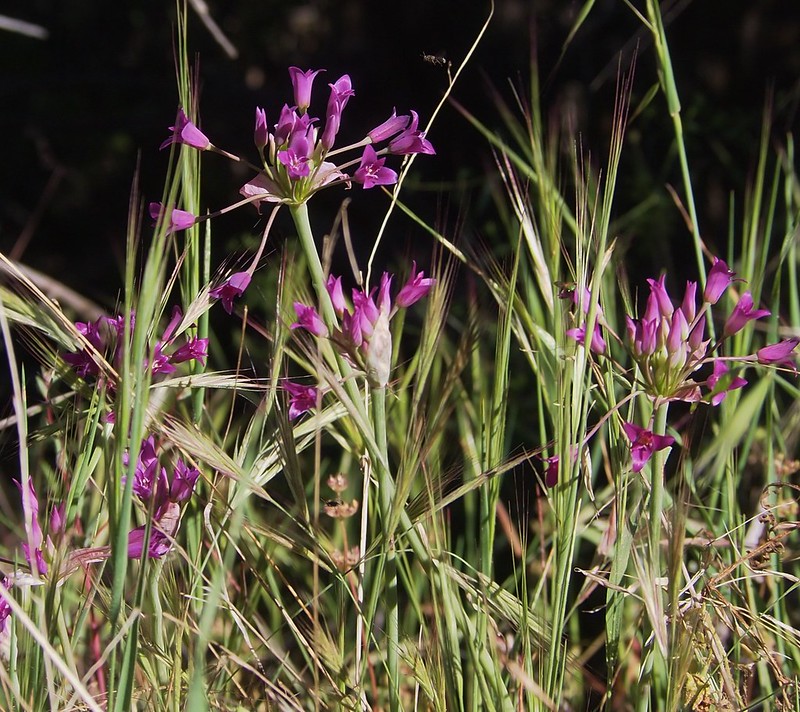
_________________________________
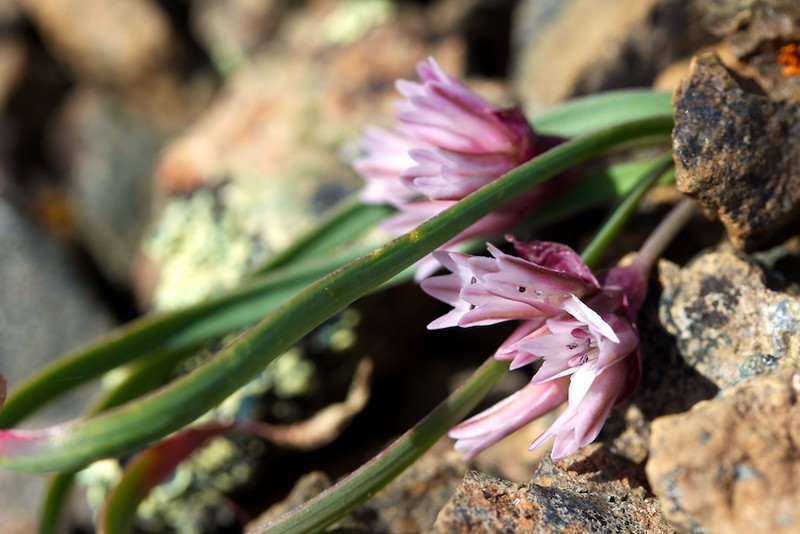
_________________________________
Sources:
header photo, A. abramsii, A. amplectens, A. crispum, A. parvum
The Jepson Manual, California Plant Families West of the Sierran Crest and Deserts, Botany in a Day
